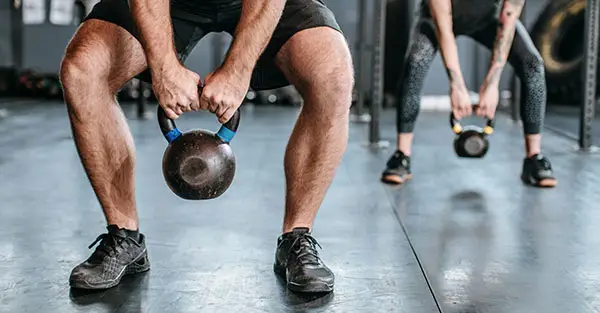By Tyler Baca
Therapydia Beaverton
As a physical therapist, a CrossFit coach, and a human of the world the biggest barrier to entry for CrossFit is the idea that “I need to get fit to try CrossFit.” This is completely understandable given that the social media around CrossFit is filled with videos and pictures of crazy stunts on suspended rings or barbells with insane amounts of weight on them. However, this is such a small sliver of the fitness that goes on in a CrossFit gym.
Most CrossFit gyms will have a program in place (i.e. “On Ramp” or “Foundations”) for new members to help them learn and develop the skills surrounding CrossFit. The purpose of these are to acquaint you with the exercises and discuss the way classes flow for their specific gym. Other gyms may have new members participate in a regular class and assign an extra coach to guide and teach you the movements necessary for the day. This process is unique to each CrossFit gym, so when you are exploring options in your area make sure that you ask a potential gym about their new member process.
Furthermore, most gyms will have a specific workout posted for the day with a prescribed number of rounds, repetitions, or time limit. These values help set a stimulus for the workout: maybe you are looking at a short and fast workout or a longer duration workout where you need to pace appropriately. In addition, if there is a weightlifting component involved, then there will be a prescribed weight to be used for the specific workout.
These parameters mentioned above are recommendations for regular members. If you are new to CrossFit, it is important that you discuss with the coach what weights or movements are appropriate for the daily workout given the prescribed sets/reps/time domain. A CrossFit coach should have alternative exercises or modifications for the prescribed workout to help you complete the work safely and effectively. A common thread between the crossfit coach and the physical therapist is the process of teaching the mechanics of the movements, then coaching consistency of movement, followed by increasing intensity of the movements. The intensity of any movement cannot be progressed until a solid foundation is built.
1. You will feel sore the day afterwards, but this is a great thing for the human body.
As to be expected with trying any new sport or physical activity, you will be sore the day following your first CrossFit workout… maybe even the first couple of weeks. To make a very long explanation short, soreness usually means that there has been some breakdown of our muscle tissue and it is in the process of being replaced with even stronger muscle tissue. The body is going through its inherent pattern of adapting to the stresses that are being demanded of it, otherwise known as muscle growth. CrossFit movements tend to mimic functional movements that we see throughout the day, thus we are strengthening muscles and movements to support daily life.
However, persistent soreness or an ache in a more localized area of the body could mean that your technique with certain movements may be leading to overuse. For instance, if you cannot keep your heels on the floor while squatting, you may be subject to some discomfort in the knee from a lack of flexibility in the ankle. I would recommend reaching out to a coach or physical therapist at this point to discuss options to improve technique. At Therapydia, our physical therapists are movement experts who are familiar with proper execution of the movements seen in the CrossFit gym.
2. Make sure to be hydrated and fed prior to exercise.
This tip is also true of any exercise routine. It is recommended that you have some source of calories prior to exercise. As you continue to increase the intensity of exercise, your body will rely even more on the macronutrients provided from food to sustain your energy. I would also recommend bringing a water bottle to stay hydrated throughout the session.
3. If you did not like today’s workout, tomorrow’s will be completely different.
One of the principles of CrossFit is that the work done “constantly varied.” This means that if you do a workout on your first day for 15 minutes with push ups, sit ups, and jump rope; then the next day is likely to have completely different movements, a different time or rep scheme, and possibly a different intensity goal. As you continue to progress through the sport, you will find movements or rep schemes that you enjoy and ones that will challenge you greatly. The constant flux along this spectrum helps shape members into strong well-rounded athletes.
4. Be open to new experiences.
While I cannot speak for all CrossFit gyms, I will say that they do tend to gather a group of outgoing and friendly people. Unlike other group exercise classes, people are going to introduce themselves to you and want to know more about you. Even though you may not be doing the same parameters of exercise as another individual in the class (as discussed above), most people still end up sweaty and out of breath by the end of the workout regardless. This shared experience creates more to chat and/or gripe about with other classmates. These connections begin to add up as you continue to see familiar faces during CrossFit classes. Be prepared to socialize as part of the CrossFit experience.
